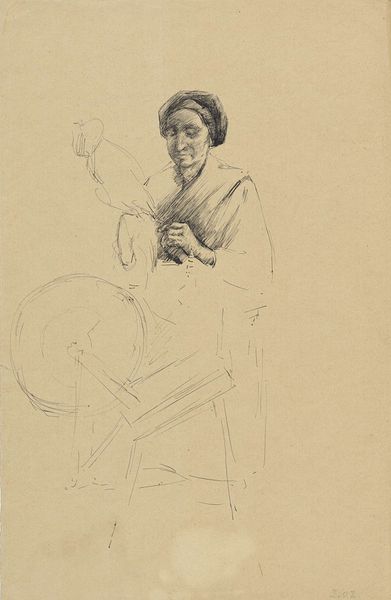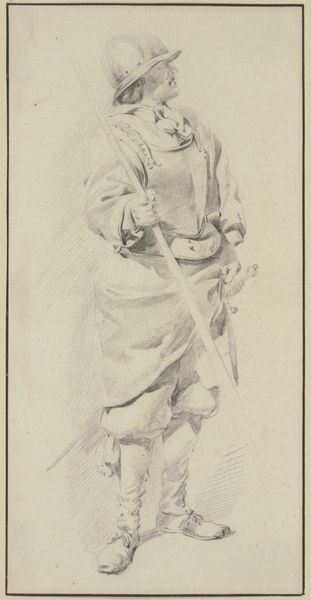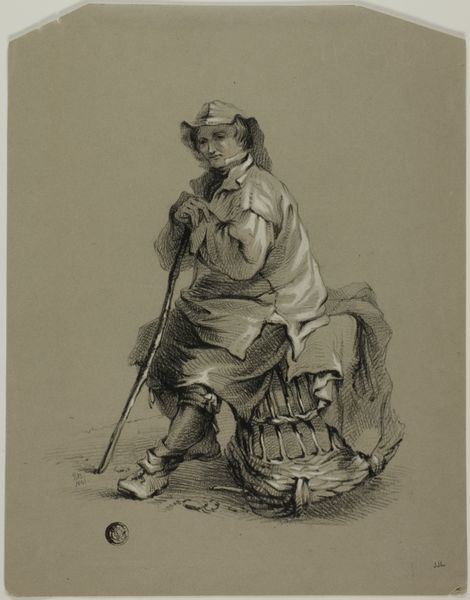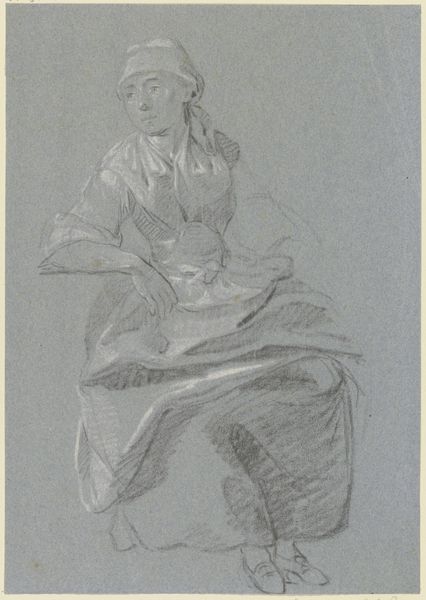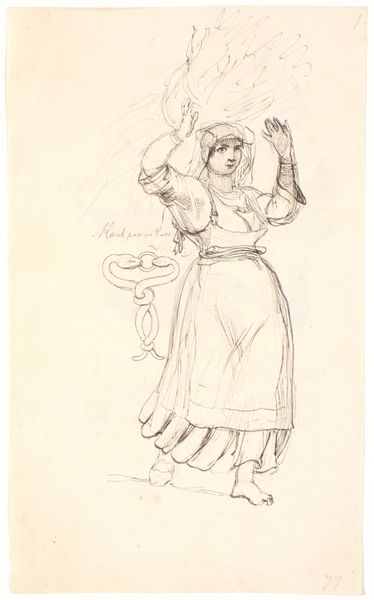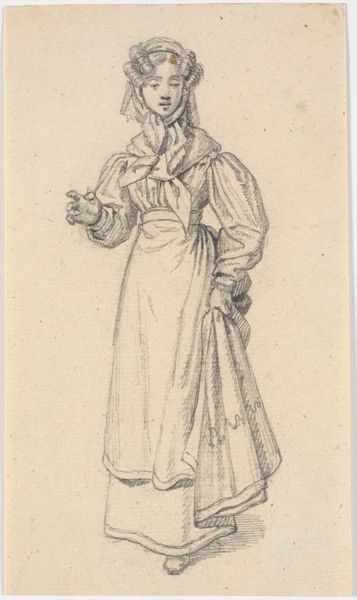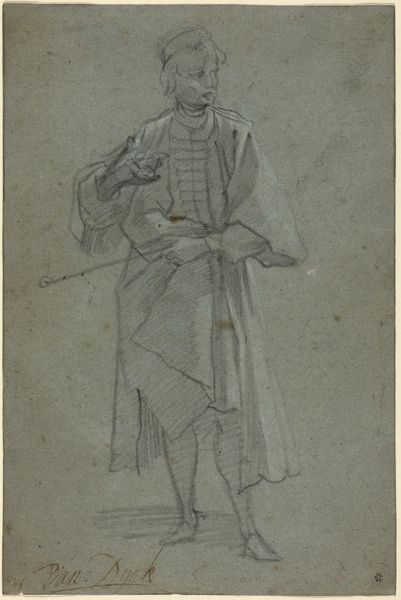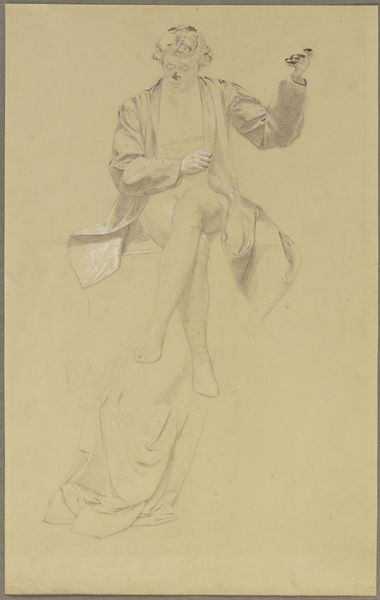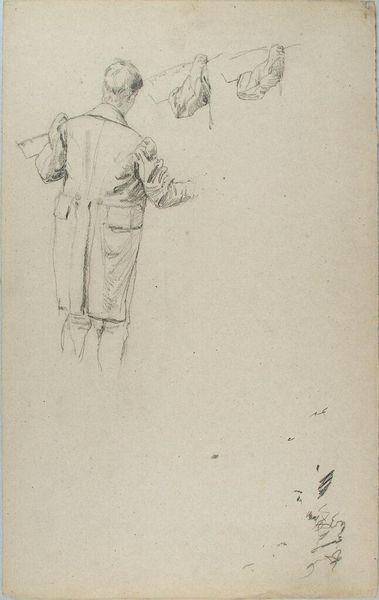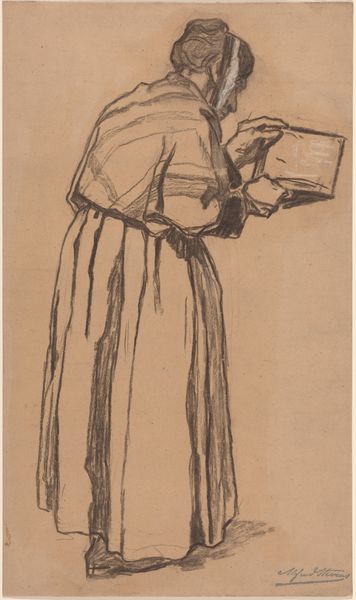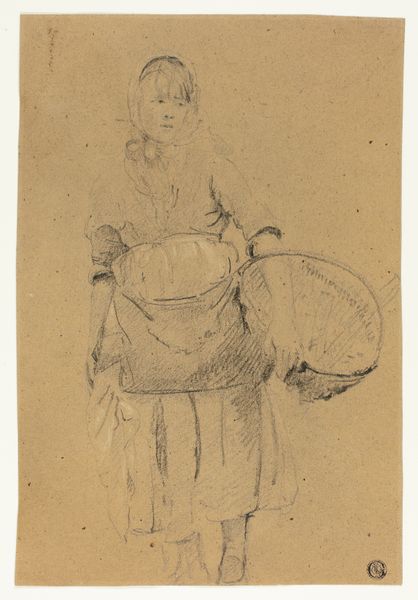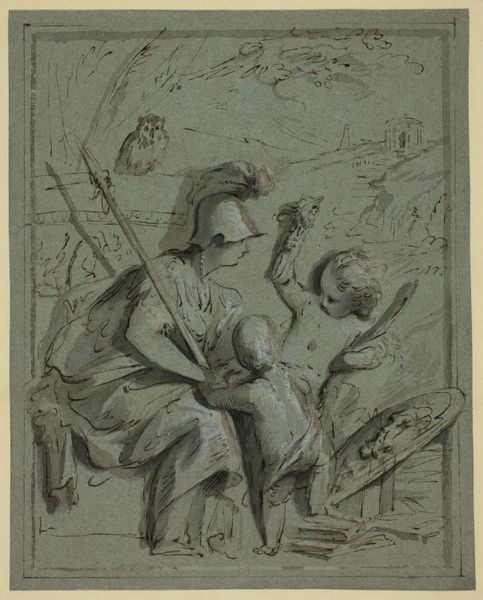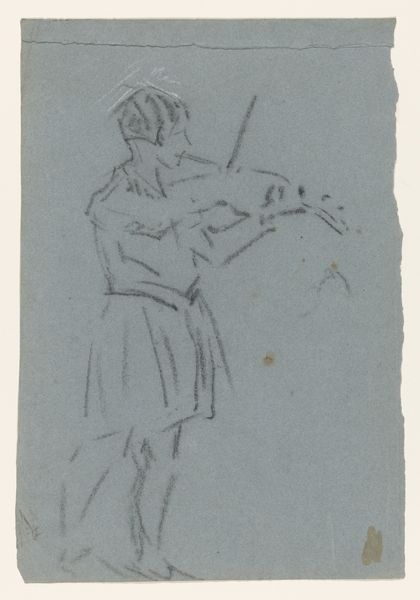
drawing, pencil
#
portrait
#
drawing
#
pencil sketch
#
pencil drawing
#
pencil
#
portrait drawing
#
genre-painting
#
realism
Dimensions: height 339 mm, width 237 mm
Copyright: Rijks Museum: Open Domain
Curator: This is Anthon van Rappard's "Spinnende vrouw," created sometime between 1868 and 1892. The medium is pencil on paper. Editor: It's quite delicate, a quiet moment captured in simple lines. The woman looks tired, but there is a calm and acceptance in her posture. The spinning wheel dominates the composition. Curator: Van Rappard, as an artist deeply concerned with social realism, frequently turned his attention to the working class and rural laborers. Genre paintings like these aimed to document the realities of life for ordinary people, but through a specific lens, influenced by institutions of art production. Editor: Exactly. It begs the question, who is this woman? She represents an entire class of exploited labor, often rendered invisible. Consider the repetitive nature of her task; how does this labor shape not only her physical existence but her mental landscape as well? Her clothing, her head covering -- they speak to a culture and a socioeconomic position. Curator: I agree. It's crucial to understand this work in relation to Van Rappard's connection to the Hague School, as they actively sought out authentic portrayals of Dutch life. However, their version of “authenticity” must always be critically examined regarding power dynamics and access within art spaces. Editor: How can we see the woman as a whole, when all we have is the labor that chains her? I wonder about her stories, her dreams beyond the frame, how many of her community suffered under these very conditions, the generational effects? Curator: This drawing serves as an historical artifact; but the image, of a woman tied to her labor and seemingly devoid of agency, invites contemporary analysis about labor and class. It's a reminder of art's engagement with real people's lives. Editor: Indeed, viewing “Spinnende vrouw" asks us to acknowledge and examine the social structure that confines many to the edges of mainstream historical discourse. We've got to expand our art historical narratives.
Comments
No comments
Be the first to comment and join the conversation on the ultimate creative platform.
